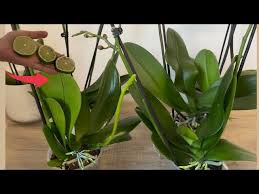The Development of the Sato Cymbidium Orchid Industry in Vietnam

The Sato Cymbidium orchid, known for its elegance and unique beauty, has emerged as a symbol of cultural significance and economic value in Vietnam. With its vibrant colors, diverse varieties, and adaptability to various growing conditions, this orchid has captured the hearts of both amateur and professional horticulturists. In this article, we will explore the history, evolution, and growth of the Sato Cymbidium orchid industry in Vietnam, as well as the factors contributing to its success and the challenges it faces.
## 1. Historical Background of Sato Cymbidium in Vietnam
The Sato Cymbidium orchid’s history in Vietnam is deeply intertwined with the country’s rich cultural heritage and agricultural practices. While the origins of the Cymbidium genus can be traced back to Asia, including countries like China and Japan, its introduction to Vietnam marked the beginning of a new chapter in the country’s floral landscape.
### 1.1 Early Cultivation and Cultural Significance
Historically, orchids have held a special place in Vietnamese culture, symbolizing beauty, luxury, and refinement. The cultivation of orchids, including the Sato variety, can be traced back centuries, with evidence suggesting that Vietnamese emperors valued these flowers for their ornamental beauty and association with nobility.
– **Cultural Symbolism:** In Vietnamese culture, orchids are not only admired for their aesthetics but also revered for their representation of love and respect. They are often used in traditional ceremonies and celebrations, further enhancing their significance in Vietnamese society.
– **Traditional Practices:** The early cultivation of Sato Cymbidium orchids involved traditional techniques passed down through generations. Local farmers utilized their knowledge of the land, weather patterns, and plant care to nurture these delicate flowers, setting the stage for the industry’s growth.
### 1.2 The Rise of Commercial Orchid Farming
In the late 20th century, the economic reforms in Vietnam, known as Đổi Mới, paved the way for agricultural diversification and modernization. This period saw a shift towards commercial farming practices, and the Sato Cymbidium orchid quickly gained popularity among farmers and entrepreneurs.
– **Market Demand:** As consumer interest in ornamental plants grew, the demand for Sato Cymbidium orchids surged. They became sought after not only for personal gardens but also for commercial use in events, floral arrangements, and interior design.
– **Professionalization of Orchid Cultivation:** The transition to commercial farming brought new techniques and technologies to orchid cultivation. Farmers began adopting advanced horticultural practices, including controlled environment agriculture, hydroponics, and tissue culture propagation, enhancing the quality and quantity of their blooms.
## 2. Economic Impact of the Sato Cymbidium Orchid Industry
The Sato Cymbidium orchid industry has become a significant contributor to Vietnam’s economy, providing livelihoods for thousands of families and fostering rural development. The cultivation, marketing, and sale of these orchids have created a vibrant economic ecosystem.
### 2.1 Job Creation and Livelihoods
The expansion of the Sato Cymbidium orchid industry has generated numerous employment opportunities, especially in rural areas where agriculture remains a primary source of income.
– **Farm Labor:** Farmers engaged in the cultivation of Sato Cymbidium orchids require skilled labor for various tasks, including planting, watering, fertilizing, and harvesting. This demand has created job opportunities for local workers, improving their livelihoods.
– **Value-Added Services:** Beyond cultivation, the industry has spawned a range of value-added services, including packaging, distribution, and floral design. Entrepreneurs have established businesses that cater to the growing market for Sato Cymbidium orchids, further enhancing job opportunities.
### 2.2 Contribution to Local Economies
The Sato Cymbidium orchid industry has positively impacted local economies by stimulating related sectors and fostering rural development.
– **Supply Chain Development:** The cultivation and sale of Sato Cymbidium orchids have led to the establishment of a robust supply chain, encompassing nurseries, suppliers of agricultural inputs, logistics providers, and retailers. This interconnectedness has strengthened local economies and fostered entrepreneurship.
– **Tourism and Cultural Promotion:** The popularity of Sato Cymbidium orchids has also attracted tourism to regions known for their orchid cultivation. Festivals and exhibitions celebrating these flowers draw visitors, contributing to the local economy and promoting cultural heritage.
### 2.3 Export Potential
As global interest in orchids continues to rise, the Sato Cymbidium orchid industry in Vietnam has recognized the potential for international trade.
– **Global Market Access:** Vietnam’s geographical location and favorable climate make it an ideal hub for orchid cultivation. The country has actively sought to expand its presence in the global orchid market, exporting Sato Cymbidium orchids to countries in Asia, Europe, and beyond.
– **Quality Standards and Certifications:** To compete in the international market, Vietnamese growers have focused on improving quality standards and obtaining certifications for their products. This commitment to quality has enhanced the reputation of Vietnamese orchids on the global stage.
## 3. Factors Contributing to the Success of the Sato Cymbidium Orchid Industry
The rapid growth of the Sato Cymbidium orchid industry in Vietnam can be attributed to several key factors that have facilitated its development.
### 3.1 Favorable Climate and Geography
Vietnam’s diverse climate and geographical features provide ideal conditions for the cultivation of Sato Cymbidium orchids.
– **Climate Variability:** The country’s tropical and subtropical climate, characterized by warm temperatures and high humidity, creates an environment conducive to orchid growth. This natural advantage has enabled farmers to cultivate Sato Cymbidium orchids year-round.
– **Diverse Growing Regions:** Various regions in Vietnam, such as the Mekong Delta, Central Highlands, and Northern provinces, offer distinct growing conditions that cater to different varieties of Sato Cymbidium orchids. This diversity allows farmers to explore a wide range of cultivation techniques and maximize their production.
### 3.2 Community Support and Knowledge Sharing
The success of the Sato Cymbidium orchid industry has been bolstered by strong community support and collaboration among growers.
– **Cooperatives and Associations:** Farmers have formed cooperatives and associations to share knowledge, resources, and best practices. These organizations facilitate training programs, workshops, and field visits, enabling growers to enhance their skills and improve their cultivation techniques.
– **Local Expertise:** The presence of experienced orchid growers and horticulturists in Vietnam has contributed to the exchange of knowledge and expertise within the community. This collaborative spirit fosters innovation and continuous improvement in orchid cultivation.
### 3.3 Research and Development
Investment in research and development has played a crucial role in advancing the Sato Cymbidium orchid industry.
– **Agricultural Research Institutions:** Collaboration between farmers and agricultural research institutions has led to the development of improved cultivation methods, pest management strategies, and disease-resistant orchid varieties. This research-driven approach enhances productivity and sustainability.
– **Innovation in Propagation Techniques:** Advancements in tissue culture propagation and hybridization techniques have enabled growers to produce high-quality Sato Cymbidium orchids with desirable traits. This innovation contributes to the industry’s competitiveness in both domestic and international markets.
## 4. Challenges Facing the Sato Cymbidium Orchid Industry
Despite its growth and success, the Sato Cymbidium orchid industry in Vietnam faces several challenges that need to be addressed to ensure its sustainability and future development.
### 4.1 Climate Change and Environmental Concerns
The impact of climate change poses significant risks to the Sato Cymbidium orchid industry, affecting growing conditions and increasing vulnerability to pests and diseases.
– **Temperature Fluctuations:** Rising temperatures and unpredictable weather patterns can disrupt the delicate balance required for orchid cultivation. Farmers may struggle to adapt their practices to changing environmental conditions.
– **Water Availability:** Climate change can also impact water availability, affecting irrigation practices. Sustainable water management practices are essential to mitigate these risks and ensure consistent orchid growth.
### 4.2 Market Competition
As the global orchid market expands, Vietnamese growers face increasing competition from other countries that produce orchids, such as Thailand and Malaysia.
– **Price Pressures:** Competition can lead to price pressures, making it challenging for Vietnamese growers to maintain profitability. To remain competitive, growers must focus on quality and branding while exploring niche markets.
– **Consumer Preferences:** Evolving consumer preferences and trends in the floral industry require growers to stay informed and adapt their offerings. Understanding market demands is crucial for sustaining growth in a competitive landscape.
### 4.3 Pest and Disease Management
Pests and diseases pose significant threats to the health of Sato Cymbidium orchids and the overall industry.
– **Integrated Pest Management:** Implementing integrated pest management strategies is essential to minimize the impact of pests while ensuring environmental sustainability. Educating growers about pest identification and control measures is crucial for effective management.
– **Disease Resistance:** Research into disease-resistant orchid varieties can enhance the resilience of the industry. Collaborative efforts among growers, researchers, and agricultural experts can lead to innovative solutions for disease prevention.
## Conclusion
The development of the Sato Cymbidium orchid industry in Vietnam has been a remarkable journey characterized by cultural significance, economic growth, and community collaboration. From its historical roots to its current status as a thriving industry, the Sato Cymbidium orchid has captured the attention of horticulturists and consumers alike.
As we continue to explore the various aspects of this industry in the second part of this article, we will delve into the innovations, trends, and future prospects that shape the Sato Cymbidium orchid industry in Vietnam. By addressing the challenges and leveraging opportunities, the industry can ensure its sustainability and contribute to the rich agricultural landscape of the country.
# The Development of the Sato Cymbidium Orchid Industry in Vietnam (Part 2)
In the first part of this article, we explored the historical background, economic impact, contributing factors, and challenges of the Sato Cymbidium orchid industry in Vietnam. As we continue our exploration, this second part will delve into the innovations, market trends, and future prospects that are shaping the Sato Cymbidium orchid industry, emphasizing the significance of sustainability, community engagement, and technological advancements in ensuring its continued growth.
## 5. Innovations in Cultivation Techniques
As the Sato Cymbidium orchid industry matures, innovation in cultivation techniques has become crucial for enhancing productivity, improving quality, and ensuring sustainability. Growers have increasingly embraced advanced agricultural practices that not only optimize their operations but also mitigate environmental impacts.
### 5.1 Hydroponics and Soil-less Cultivation
One of the most significant advancements in orchid cultivation is the adoption of hydroponics and soil-less growing systems. These methods allow for more precise control over nutrient delivery and reduce the risk of soil-borne diseases.
– **Nutrient Solutions:** In hydroponic systems, orchids receive nutrients directly through water, allowing for optimal growth conditions. This method enhances flower quality and reduces the need for chemical fertilizers.
– **Space Efficiency:** Soil-less cultivation methods can also maximize space utilization, enabling growers to produce more orchids in limited areas. Vertical farming and tiered systems are examples of how space can be efficiently used in urban settings.
### 5.2 Controlled Environment Agriculture (CEA)
Controlled Environment Agriculture (CEA) involves creating optimal growing conditions through technology. This innovative approach has gained traction among Sato Cymbidium orchid growers.
– **Climate Control:** CEA allows for precise regulation of temperature, humidity, and light levels, promoting healthy growth regardless of external weather conditions. Growers can create ideal environments that mimic the natural habitats of Sato Cymbidium orchids.
– **Pest and Disease Management:** By minimizing exposure to external environmental factors, CEA systems can reduce the likelihood of pest infestations and disease outbreaks. This contributes to a more sustainable and productive growing operation.
### 5.3 Genetic Research and Hybridization
Research into the genetic traits of Sato Cymbidium orchids has led to the development of new hybrids that exhibit desirable characteristics, such as disease resistance, enhanced colors, and unique patterns.
– **Tissue Culture Propagation:** Advances in tissue culture techniques enable the mass propagation of high-quality hybrids, allowing growers to produce consistent and uniform orchids. This method reduces the time needed to cultivate new plants from seeds or cuttings.
– **Sustainable Practices:** Breeding disease-resistant varieties contributes to sustainable practices within the industry, minimizing the need for chemical treatments and promoting ecological balance.
## 6. Market Trends and Consumer Preferences
Understanding market trends and consumer preferences is essential for growers to remain competitive and cater to the evolving demands of the floral industry. The Sato Cymbidium orchid industry is no exception, as consumer behavior continues to shape production and marketing strategies.
### 6.1 Rise of Eco-conscious Consumers
As environmental awareness grows, consumers are increasingly favoring eco-friendly products. This shift has influenced the Sato Cymbidium orchid market.
– **Sustainable Growing Practices:** Consumers are drawn to orchids cultivated using sustainable methods, such as organic fertilizers and integrated pest management. Growers who prioritize environmentally friendly practices are likely to gain a competitive advantage.
– **Biodegradable Packaging:** The demand for sustainable packaging solutions has led growers to adopt biodegradable and recyclable materials for their products. This commitment to sustainability resonates with eco-conscious consumers.
### 6.2 Customization and Personalization
Today’s consumers seek unique and personalized experiences. The Sato Cymbidium orchid industry has responded to this trend by offering customized products and services.
– **Tailored Floral Arrangements:** Floral designers are increasingly incorporating Sato Cymbidium orchids into bespoke arrangements that cater to individual tastes and preferences. This customization adds value to the product and enhances customer satisfaction.
– **Gifting Trends:** Sato Cymbidium orchids are popular gifts for various occasions, from weddings to corporate events. Offering personalized options, such as custom pots or engraved tags, can enhance the gifting experience and increase sales.
### 6.3 Online Sales and E-commerce Growth
The rise of e-commerce has transformed the way consumers shop for plants and flowers. The Sato Cymbidium orchid industry has embraced this trend by establishing a robust online presence.
– **Digital Marketing Strategies:** Growers are leveraging social media platforms, websites, and online marketplaces to promote their products and engage with customers. This approach not only increases visibility but also facilitates direct sales.
– **Virtual Flower Shows:** Online flower shows and virtual exhibitions have become popular, allowing growers to showcase their Sato Cymbidium orchids to a broader audience. This trend has opened new avenues for sales and marketing.
## 7. Community Engagement and Education
Community engagement plays a vital role in the growth of the Sato Cymbidium orchid industry. Collaboration among growers, educators, and consumers fosters knowledge sharing and strengthens the industry.
### 7.1 Workshops and Training Programs
To promote best practices in orchid cultivation, many growers and organizations have initiated workshops and training programs.
– **Skill Development:** These programs provide growers with valuable knowledge on advanced cultivation techniques, pest management, and marketing strategies. By enhancing their skills, growers can improve productivity and product quality.
– **Community Building:** Workshops also serve as networking opportunities, fostering collaboration and camaraderie among orchid enthusiasts. This sense of community strengthens the industry and encourages knowledge exchange.
### 7.2 School and University Partnerships
Educational institutions have begun to recognize the importance of horticulture and environmental education. Collaborations between growers and schools or universities facilitate hands-on learning experiences.
– **Curriculum Integration:** Integrating orchid cultivation into educational curricula allows students to explore plant biology, ecology, and sustainable agriculture. This approach encourages future generations to appreciate the beauty of Sato Cymbidium orchids and understand their ecological significance.
– **Research Opportunities:** Partnerships with universities can lead to research initiatives focused on improving cultivation techniques, pest management, and orchid breeding. This collaboration enhances the scientific understanding of Sato Cymbidium orchids and supports innovation.
## 8. Future Prospects and Sustainability
The future of the Sato Cymbidium orchid industry in Vietnam holds great promise. By addressing challenges, embracing innovations, and focusing on sustainability, the industry can continue to thrive.
### 8.1 Sustainable Practices for Long-term Viability
Sustainability will be at the forefront of the Sato Cymbidium orchid industry’s future development.
– **Environmental Stewardship:** Growers are increasingly adopting sustainable practices, such as organic farming, water conservation, and waste reduction. These efforts contribute to the preservation of natural resources and promote ecological balance.
– **Community Involvement:** Engaging local communities in sustainable practices fosters a sense of responsibility and encourages collective action. By promoting sustainable cultivation methods, growers can create a positive impact on the environment.
### 8.2 Expanding Market Reach
As the global demand for orchids continues to rise, the Sato Cymbidium orchid industry can explore new markets and opportunities.
– **Export Growth:** With strategic marketing and quality assurance, Vietnamese growers can increase their presence in international markets. Expanding export channels can enhance the industry’s profitability and competitiveness.
– **Niche Markets:** Identifying niche markets, such as eco-tourism, wellness retreats, and corporate gifting, can create new avenues for growth. By targeting specific consumer segments, growers can tailor their offerings to meet unique demands.
### 8.3 Technological Advancements
The integration of technology into the Sato Cymbidium orchid industry is expected to continue shaping its future.
– **Smart Farming Solutions:** The use of smart farming technologies, such as sensors, data analytics, and automation, can optimize resource use and improve operational efficiency. These innovations enhance productivity while minimizing environmental impacts.
– **Research and Development:** Ongoing research and development efforts will lead to the discovery of new techniques and products that can further enhance the quality and appeal of Sato Cymbidium orchids. Collaboration among researchers, growers, and industry stakeholders will be essential for fostering innovation.
## Conclusion
The Sato Cymbidium orchid industry in Vietnam has experienced remarkable growth and development over the years, evolving from traditional cultivation practices to a vibrant and dynamic sector. By embracing innovation, sustainability, and community engagement, the industry is well-positioned for a successful future.
As we reflect on the journey of the Sato Cymbidium orchid industry, it is clear that the flowers hold not only aesthetic value but also significant cultural and economic importance. By nurturing this industry with care and dedication, Vietnam can continue to be a leading player in the global orchid market while preserving the rich cultural heritage associated with these exquisite blooms. The future of the Sato Cymbidium orchid industry is bright, with endless possibilities for growth, sustainability, and connection to nature.

